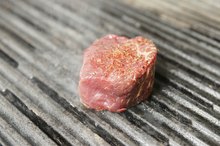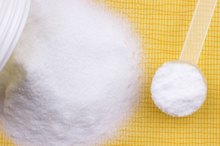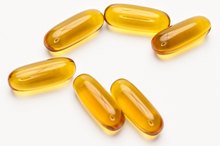What does fact checked mean?
At Healthfully, we strive to deliver objective content that is accurate and up-to-date. Our team periodically reviews articles in order to ensure content quality. The sources cited below consist of evidence from peer-reviewed journals, prominent medical organizations, academic associations, and government data.
- "Hormone and Metabolic Research"; An Elevation of BUN/creatinine Ratio in Patients with Hyperthyroidism; T. Aizawa, et al.; November 1986
- "Hormone and Metabolic Research"; An Elevation of BUN/creatinine Ratio in Patients with Hyperthyroidism; T. Aizawa, et al.; November 1986
- National Endocrine and Metabolic Diseases Information Service; Hyperthyroidism; April 2008
The information contained on this site is for informational purposes only, and should not be used as a substitute for the advice of a professional health care provider. Please check with the appropriate physician regarding health questions and concerns. Although we strive to deliver accurate and up-to-date information, no guarantee to that effect is made.
Effects of Hyperthyroidism on Creatine Levels
Throughout the course of the day, as your body moves, it uses up energy from the food and drink that you’ve consumed. This would not be possible without creatine, an important amino acid that plays a critical role in providing fuel for your body’s individual cells, especially your muscles. Creatine levels, however, can be affected by various factors, such as your diet and lifestyle. Some diseases, such as hyperthyroidism, can also cause significant changes in your creatine levels.
What is Creatine?
Creatine is one of the several different types of amino acids that animals produce. In the human body, this building block of protein is synthesized within the pancreas, liver and kidney. Around 95 percent of your body’s creatine is stored within skeletal muscles, where it is converted into creatine phosphate or phosphocreatine and used as a fuel source for muscular activity. During high-intensity exercises, such as:
- power-lifting
- high jumping
- phosphocreatine turns into adenosine triphosphate
- or ATP
- one of the body’s major energy sources
- Creatine is one of the several different types of amino acids that animals produce.
- Around 95 percent of your body’s creatine is stored within skeletal muscles, where it is converted into creatine phosphate or phosphocreatine and used as a fuel source for muscular activity.
What is Hyperthyroidism?
How Much Creatine Is in Red Meat?
Learn More
Hyperthyroidism is a disorder of the thyroid gland. This disease causes the gland to produce an excessive amount of thyroid hormone. This can potentially cause serious health problems.
Creatine Levels and Hyperthyroidism
Your baseline creatine level is determined by age, gender, ethnic background, lean body mass and physical activity. Medical research has revealed, however, that creatine levels are also inversely related with activity of the thyroid hormone. A study from Indian researchers published in the 2007 first quarter issue of the “Journal of Medical Education and Research” found that patients with hyperthyroidism, or high thyroid activity, produced significantly lower amounts of creatine than normal 3. The reverse held true for patients with hypothyroidism, or low thyroid activity – these individuals had much higher levels of creatine.
- Your baseline creatine level is determined by age, gender, ethnic background, lean body mass and physical activity.
- A study from Indian researchers published in the 2007 first quarter issue of the “Journal of Medical Education and Research” found that patients with hyperthyroidism, or high thyroid activity, produced significantly lower amounts of creatine than normal 3.
Sources of Creatine
How Much Creatine Can Your Muscles Absorb?
Learn More
Low creatine levels can be boosted by consuming natural dietary sources or supplements that contain this amino acid. Approximately half of the creatine in your body is naturally produced by your kidney, liver and pancreas, the University of Maryland Medical Center notes 4. Foods high in creatine include lean red meat and fish such as herring, salmon and tuna; wild game is among the richest sources of creatine. Supplements are widely available in various forms such as capsules, powders, tablets, energy bars and drink mixes. Talk to your doctor before using any creative supplements.
- Low creatine levels can be boosted by consuming natural dietary sources or supplements that contain this amino acid.
- Foods high in creatine include lean red meat and fish such as herring, salmon and tuna; wild game is among the richest sources of creatine.
Related Articles
References
- Colorado State University; Physiologic Effects of Thyroid Hormones; July 2010
- "Hormone and Metabolic Research"; An Elevation of BUN/creatinine Ratio in Patients with Hyperthyroidism; T. Aizawa, et al.; November 1986
- "Journal of Medical Education and Research"; Serum Creatine Kinase Activity in Thyroid Disorders; Archana Prakash, et al.; January to March 2007
- University of Maryland Medical Center; Creatine; June 2009
Writer Bio
Joseph Pritchard graduated from Our Lady of Fatima Medical School with a medical degree. He has spent almost a decade studying humanity. Dr. Pritchard writes as a San Francisco biology expert for a prominent website and thoroughly enjoys sharing the knowledge he has accumulated.








